Ever wondered how the coldest winters in Montana stack up in the frigidity stakes? The Big Sky Country is known for more than skiing, breathtaking landscapes, and idyllic rustic appeal; it’s also home to some of the most chilling temperatures in the contiguous 48 states.
In this article, we’ll explore the teeth-chattering Montana coldest winter records. From the coldest temperature at Rogers Pass in 1954 to the greatest temperature drop at Browning in 1916, Montana has etched its name in the frosty United States history.
We’re not just about weather statistics though; this expedition into Montana’s frigid historical chronicles also gives us insight into the many bizarre curiosities the state has to throw at us.
Ever heard of a snow squall? How about an avalanche? Staying informed about these weather phenomena might just save your hide during a visit to the Treasure State in winter.
- Related article: Montana Winter Conditions
So, put on a virtual jacket and get ready to traverse the icy landscapes of one of America’s most enigmatic states. The invitation awaits; Montana’s cold winters are calling.
7 Key Takeaways on Montana’s Coldest Winters
- The coldest day in Montana’s history occurred on January 20th, 1954 at Rogers Pass, dropping to an astonishing -70°F (-56.7°C).
- Layering up was critical in West Yellowstone, which endured a national record of -66°F (-54.4°C) in 1933.
- Fairfield witnessed a remarkable temperature drop from 63°F (101.4°C) to -21°F (-33.8°C) in just 12 hours, earning global recognition.
- From record-breaking low temperatures to hurricane-strength winds in 1989, Montana experienced a dramatic cold spell.
- The Blizzard of 1969 brought record snowfall that killed thousands of livestock and paralyzed the state.
- Montana’s Winter of 1936, known as “The Big Chill,” saw prolonged extreme temperatures across the state.
- The harsh winter of 1886-1887 led to the dramatic reformation of livestock management in Montana.
Winter Weather Terms
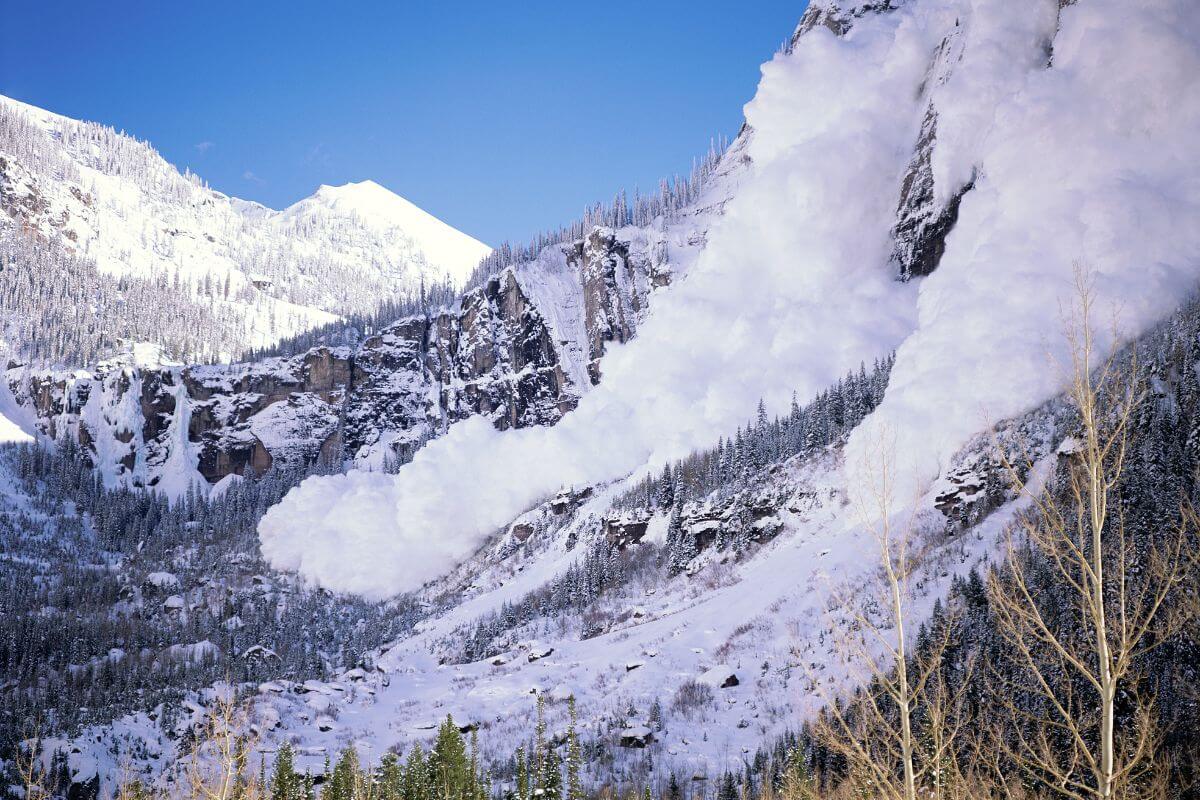
Being able to distinguish between a light flurry and a full-blown snow squall can be incredibly useful, especially when you’re navigating the winter wonderland of the Treasure State.
Understanding what these winter weather terms mean can make your Montana travel experience not only safer but also more enjoyable.
- Avalanche – An avalanche is a massive flow of snow, ice, and debris down a mountain.
- Blizzard – A blizzard means winds of 35 mph (56.3 kph) or more with snow and blowing snow reducing visibility to less than 1/4 mile (0.40 km) for at least 3 hours.
- Freezing Rain – Rain that freezes on impact, creating a coating of ice on roads, walkways, trees, and power lines. If a ½ inch or more of freezing rain is forecast, an Ice Storm Warning will be issued.
- Ice Storm – A type of winter storm, ice storm is characterized by significant amounts of freezing rain which can coat everything in a thick layer of ice. Trees can be brought down and utility poles can be toppled.
- Snow Squall – A snow squall is a quick and intense burst of heavy snow with strong winds, typically causing low visibility and hazardous driving conditions.
- Winter Storm – A variety of winter conditions may occur, including heavy snow, blizzard conditions, freezing rain, sleet, and dangerous wind chills.
- Wind Chill – A wind chill is a measure of how cold the atmosphere feels. It’s not just the actual temperature that matters, but also the wind, which can make the air feel much colder.
Understanding these terminologies can be more than just a fun fact – it could save you from finding yourself in a risky situation. So, next time you check the forecast, keep an eye out for that wind chill warning, pack a little extra insulation, and go full Montana mode.
Montana’s Worst and Coldest Winters
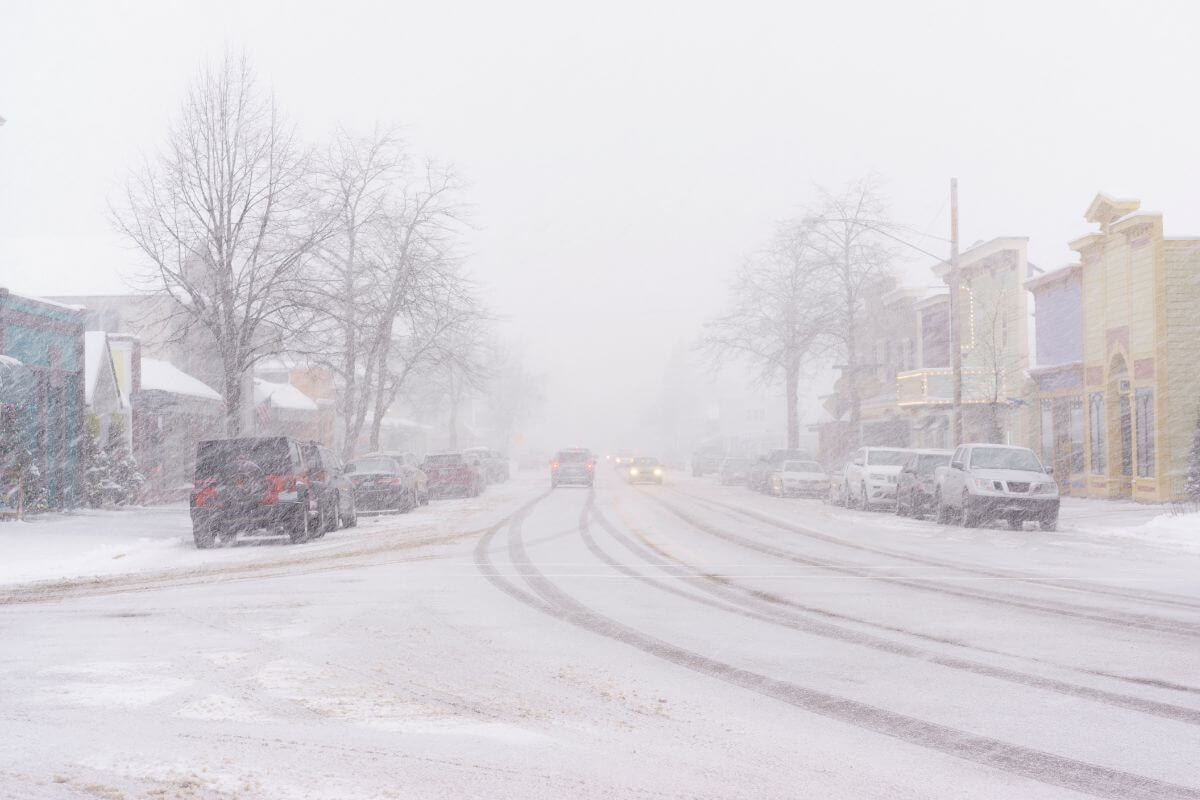
Montana’s diverse geography, characterized by its numerous mountain ranges, rolling plains, and deep valleys, significantly affects the temperatures throughout the state, leading to extreme winter weather conditions.
The state frequently experiences below-zero temperatures during its winter months, which typically last about 3.4 months on average. With the combination of cold temperatures and heavy snowfall, winters in Big Sky Country can be harsh and unforgiving.
So, let’s travel back in time to explore Montana’s coldest winters. Buckle up, it’s going to be a chilling ride.
1. Rogers Pass (1954)
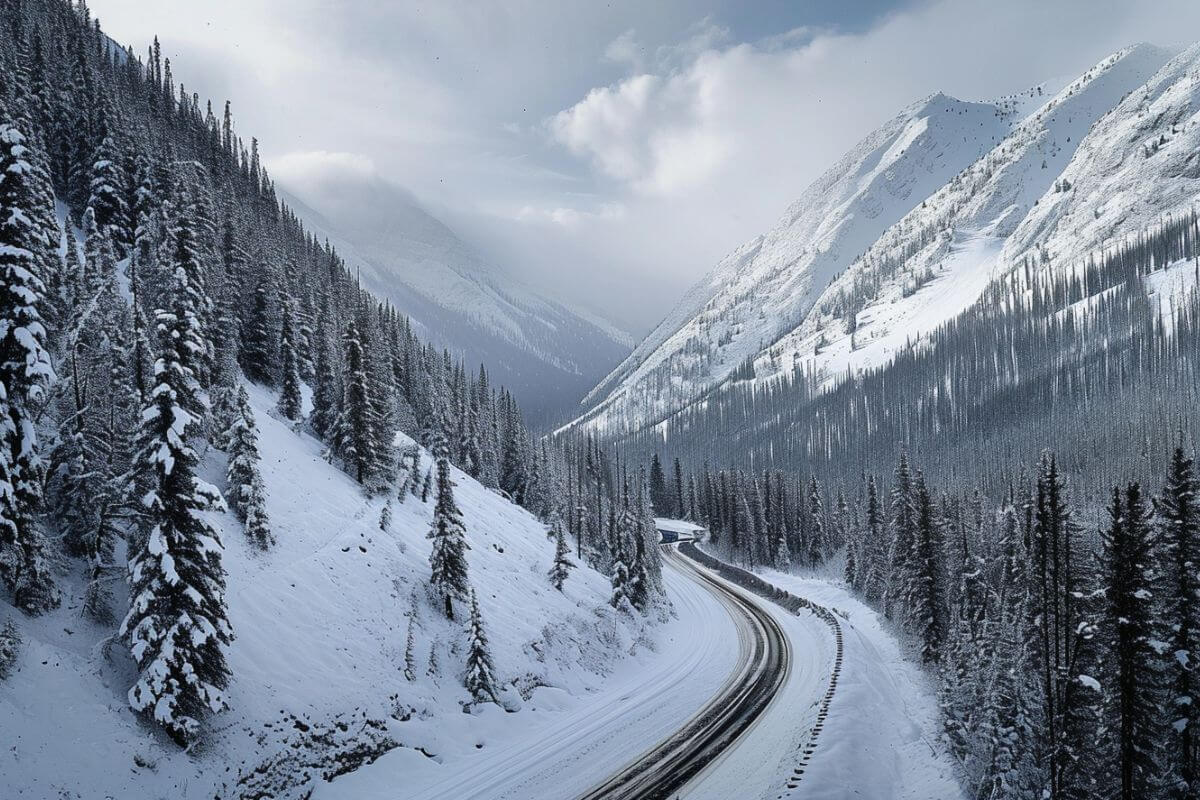
Do you think you know cold? Wait until you discover what happened at a mining camp near the Continental Divide.
On January 20th, 1954, the folks over at Rogers Pass, near Helena, experienced the coldest day in Montana’s and the entire contiguous U.S. record books. The mercury nosedived to an astonishing -70°F (-56.7°C), a feat that puts nearly everything else in the shade.
The chilling stats weren’t a fluke but the result of a week of chilly arctic invasions that pumped up the snow depth at the mine from 8 inches to a mountain-sized 66 inches in just 7 days. But wait, there’s more: these figures smashed the former national record set in 1933 near West Yellowstone.
This bone-chilling day, immortalized in 1954, is critical for weather historians and enthusiasts, a visceral testament to Mother Nature’s raw power and unpredictability. Just when you thought it couldn’t get any colder, they said, “Hold my beer.”
So the next time someone tells you about a bracing cold snap, you know that inferior record holders need not apply. Remember, this is crisp, unforgettable history that makes today’s -20-degree winters seem like a heated debate.
2. West Yellowstone (1933)
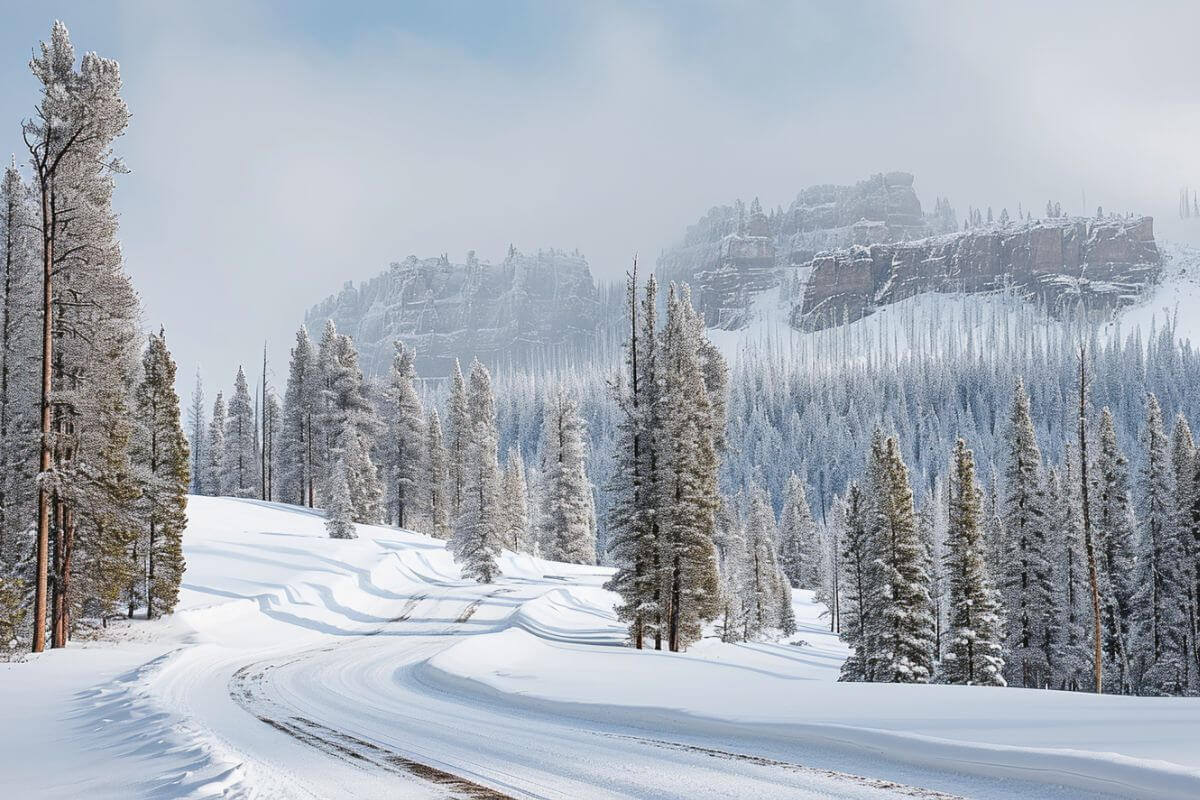
On February 9, 1933, West Yellowstone, a quaint town in Montana wedged near the Idaho border, experienced one of the coldest winters in its history. This frigid temperature not only shocked residents but also set a record that still stands today.
Montana set the national record for the coldest day near West Yellowstone when temperatures dipped to a bone-chilling -66°F (-54.4°C). The intense cold had a severe impact on the area, causing widespread disruptions to daily life.
This record-breaking cold snap underscored Montana’s severe cold weather. So, the next time you think it’s cold outside, try and picture yourself in West Yellowstone during that record-dropping day in 1933; it might just redefine your definition of “chilly”!
3. Fairfield (1924)
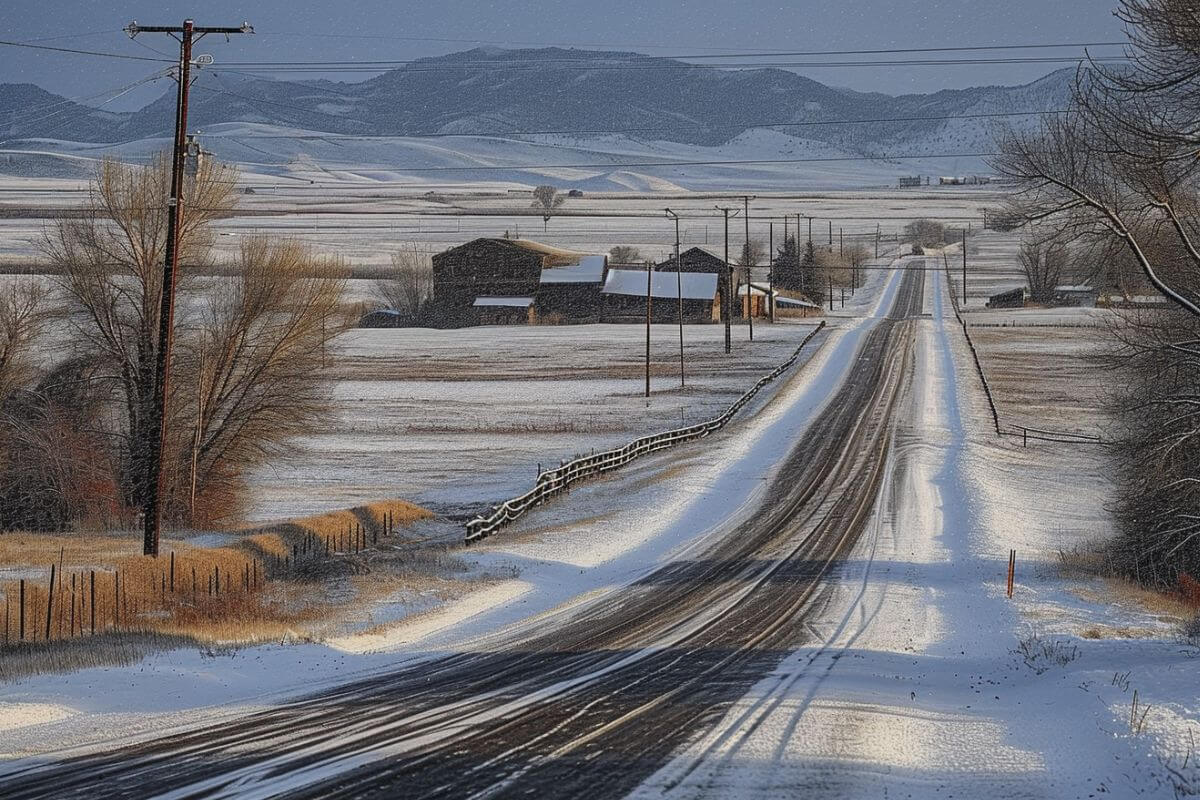
If we’re talking about chilling tales, or should I say, temperatures to freeze time itself, the Fairfield story is a quintessential icebreaker. On December 24, 1924, Fairfield, a speck on Montana’s vast landscape, found itself making a huge meteorological mark.
In just 12 hours, the temperature plummeted from a pleasant 63°F (101.4°C) to a bone-numbing -21°F (-33.8°C). Your thermometer wouldn’t have time to sneeze; that’s the United States’ most dramatic 12-hour free fall in recorded history.
The state isn’t just vast in geographical terms; it’s positively macroscopic when it comes to temperature extremes. So what can we learn from Fairfield’s icy encounter? Be prepared for the unexpected, the strange, and sometimes the downright confounding when you’re under Montana’s big sky.
4. Browning (1916)
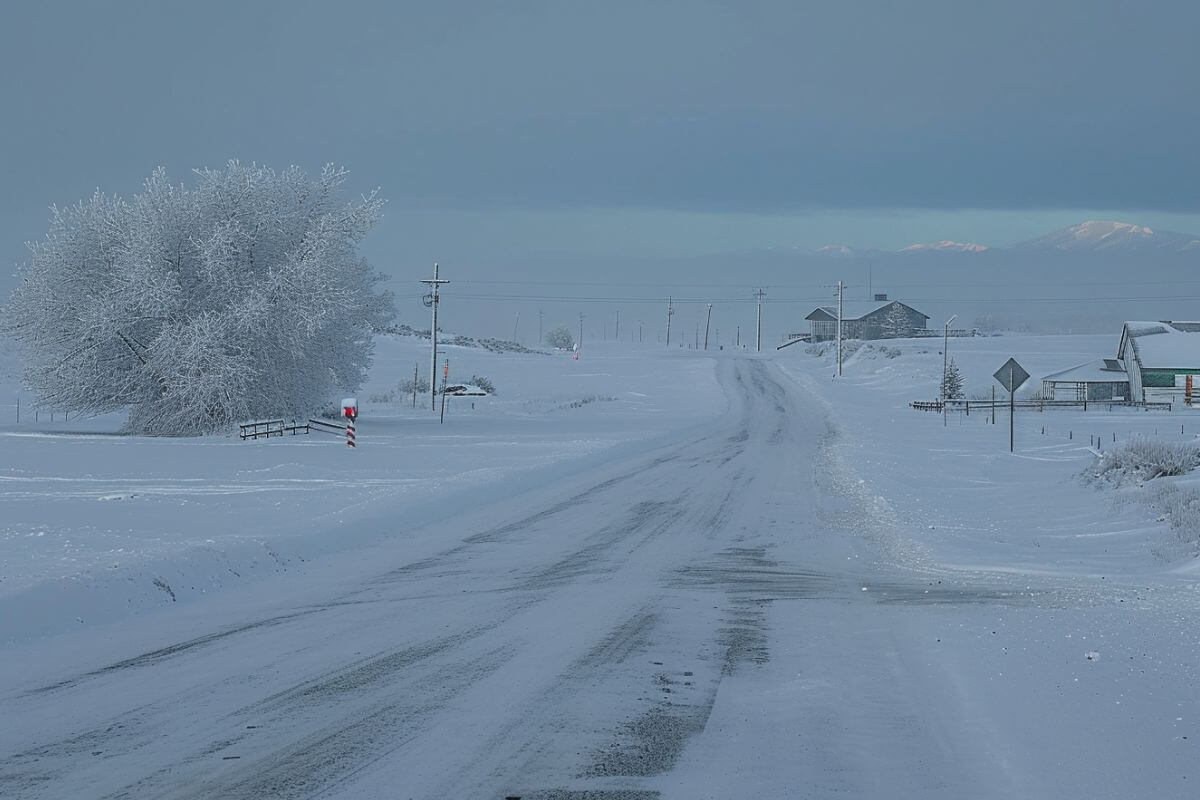
Imagine going about your day at a comfortable 44°F (6.67°C), thinking of chores or maybe a picnic, only to have the temperature plummet a whopping 100 degrees to a mind-numbing -56°F (-48.9°C) — all in under 24 hours.
This is Montana’s claim to dramatic weather fame. In 1916, Browning got caught in what you could call a meteorological roller coaster, all thanks to a Chinook wind, which is like nature’s big cozy hug that can bring in warm, windy weather, and a no-nonsense arctic invasion.
What makes the 1916 Browning episode stand out in meteorological history is that it’s the U.S. and world record for the greatest temperature drop in a single day. The rapid and drastic drop in temperature was the result of a traveling arctic invasion.
This event serves as a striking reminder of the power of nature and the unpredictable and extreme weather patterns that can occur, especially in regions prone to rapid climate change.
5. Winter of 1989
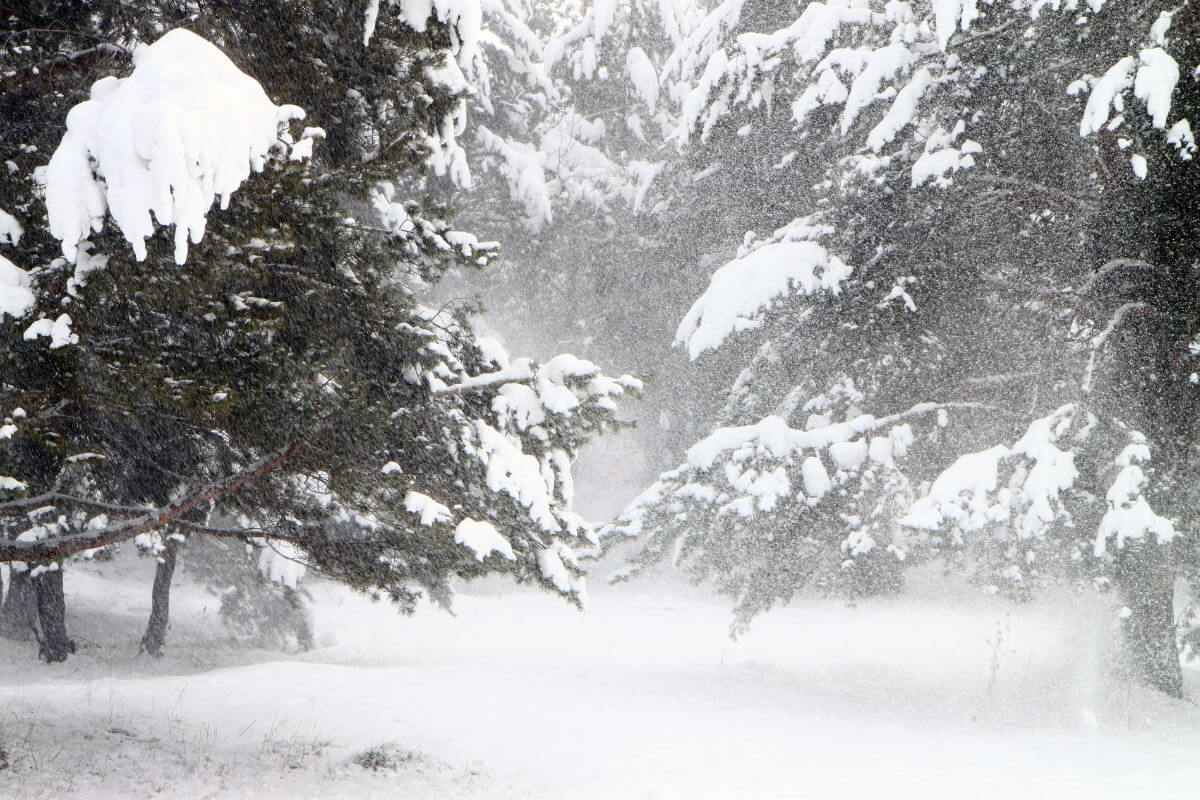
January 1989 in Montana—a time that’s etched in the collective memory for all the wrong (or right, if you’re a fan of dramatic weather) reasons. A star-crossed tale of a weeklong trick played by Mother Nature herself.
The disastrous January warm spell was a sudden spike in temperature that threw the natural order into disarray, with much plant life killed. But this was just the warm-up act, literally. A relentless Arctic air mass charged through the Northern Rockies like an uninvited guest at a garden party.
Shelby didn’t just witness windy conditions; it experienced down-slope winds so intense with 100 miles per hour (161 kph), they blew over 12 railroad cars. Browning and Choteau weren’t to be left out, with winds hitting 102 mph (164 kph) and 124 mph (199.6 kph). Billings and Bozeman, not to be outdone by the rest of the state, set record lows for consecutive days.
From Jan 30th to Feb 4th, areas across the state experienced temperatures that would make your freezer feel like a tropical paradise, dropping well below -50°F (45.56°C). To add insult to injury, the wind chill spiraled to nearly -70°F (-112.7°C).
It was a winter to remember, one that you could argue ‘broke the ice’ for other frigid escapades. It’s an eerie scenario to look back on now, but it also underlines the unpredictability of our planet and the importance of respecting the power of nature.
6. Blizzard of 1969
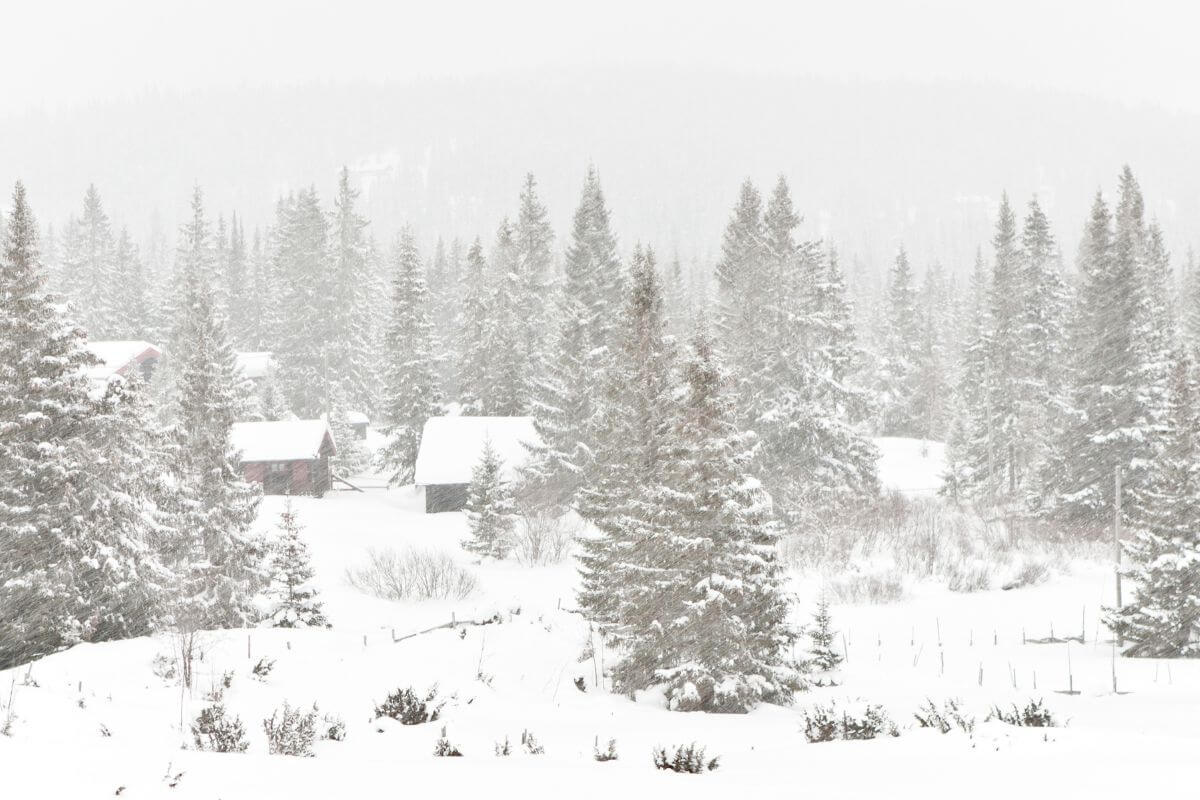
In the late spring of ’69, while the rest of the country was slipping on its sandals, Montana was under siege by one of the worst winter storms ever recorded. The 1969 blizzard of Montana wasn’t just a record-breaker; it was a life-taker.
A snowstorm in late April that most of us would find laughable turned deadly as it put an immediate end to anyone’s plans for a country picnic. This not-so-little storm of 1969 brought a record snowfall of up to 32 inches in some areas and drifts as deep as 20 feet in southeast Montana.
The cherry on top? Mother Nature served it all up with chills that dipped below zero. The cold and snow weren’t picky, affecting not just the ranchers but also their livestock. Tens of thousands of cattle, sheep, and horses lost their lives in the teeth of this storm.
The blizzard didn’t just stop at Mother Nature’s cruel jokes. The scene turned into a winter war zone with power lines down for weeks, leaving Montanans scrambling for strategies to keep warm and connected.
So there you have it, the legendary Blizzard of ’69. Not the best thing to come out of this state, that’s for sure, but a humble reminder that Montana winters aren’t something you play games with.
7. Winter of 1936
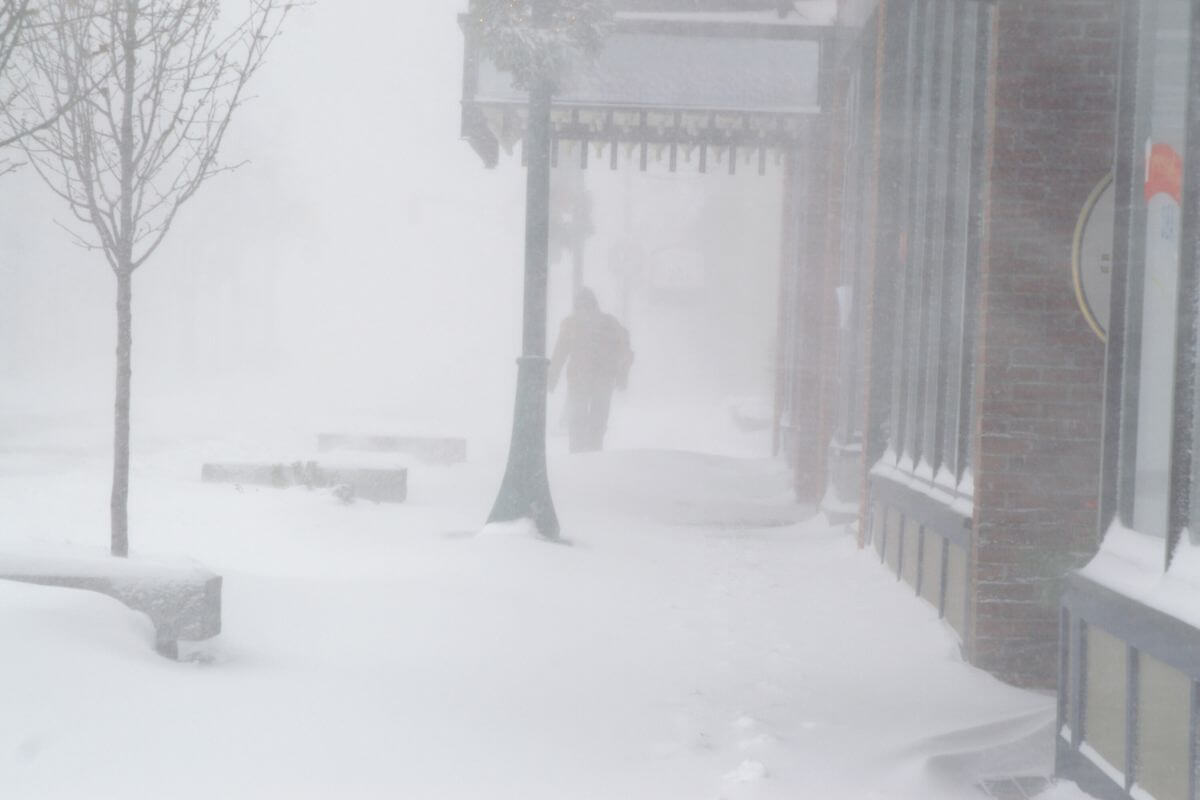
Montana’s Winter of 1936 – known to locals as “The Big Chill” – would make even the most seasoned winter aficionado shiver. In February, Mother Nature decided to throw the rule book out the window, with the mean temperature plummeting a bone-chilling 22.4 degrees below the norm across 111 of the state’s reporting stations.
As if setting the stage for a record-breaking run, January showed little mercy, with temperatures diving to astonishing lows. -53°F (-47.22°C) at Summit, -57°F (-49.4°C) at Cascade, and Frazer and Glasgow, both hitting bone-chilling -59°F (-50.6°C).
But just when you thought Montana couldn’t get any frostier, March came in like a lion – and left like a polar bear. The month started with an overall average, but by its end, thermometers were registering well below freezing.
Chessman Reservoir was at -28°F (-33.3°C), Red Lodge at -20°F (-28.9°C), and Summit’s low was -29°F (-33.9°C). These were the days when 10 below was considered a warm welcome, and the cold wind chill often made it feel like you were living on the dark side of the moon which exceeded -100°F (-73.3°C).
The cold grip of winter didn’t loosen until well into April. Montana east of the mountains endured the brunt, with below-zero readings stubbornly persisting for 57 days straight.
If you’re ever caught in a Montana winter, these bone-chilling stats from 1936 will certainly set your teeth chattering. So next time you’re out in the snow, take a moment to appreciate the subtle beauty of a – dare I say it – warm 10 below.
8. Winter of 1886-1887
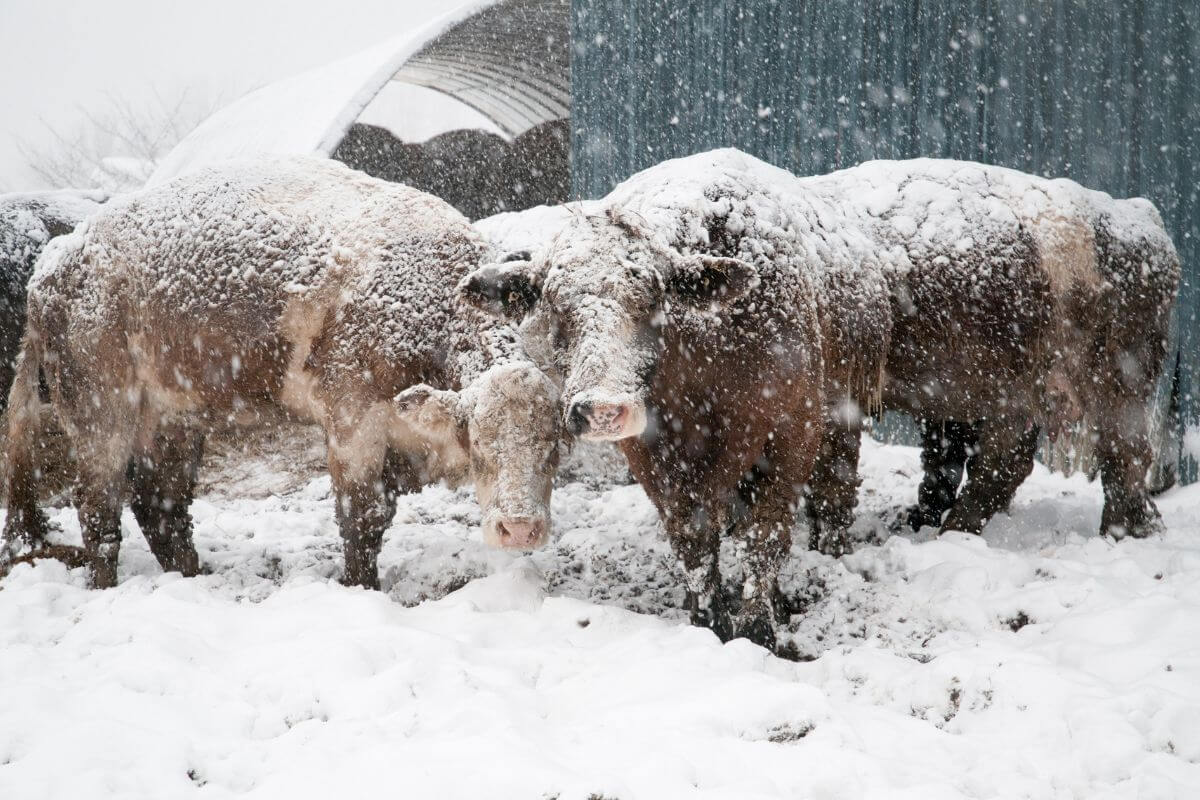
The winter of 1886-1887 in Montana was the stuff of nightmares, not just for the people, but also for the cattle. After a bone-dry summer and fall, the landscape was parched. Then, arctic storms hit in November and December, an unwelcome plot twist that led to short thaws.
Come January, there wasn’t even grass to tease. A crust of ice had hardened over the little vegetation that remained, which made it impossible for the animals to get at it. If the bitter cold, which reached an unfathomable -40°F (-40°C) in some places, wasn’t enough, the deep snow added a chilling final touch.
Our furry friends, the cattle, paid the ultimate price. A startling 16-inch snowfall on January 9 was the knockout blow. I’d say it was a deadly combination of extreme cold, blowing snow, and a suffocating layer of ice.
The poor cattle froze where they stood, viciously succumbing to nature’s fury. By the time March mercifully arrived, 60 percent of Montana’s cattle herds had vanished like streaks of sunlight on a winter’s day.
This was the tragic end of an era, a dramatic finale for the days of unregulated, free-roaming grazing. From this winter on, ranchers began to take livestock management more seriously.
The winter of 1886-87 is a sobering reminder of the raw, uncompromising power of nature and how a single season can rewrite the rules of an entire industry.
Montana’s Coldest Winters Final Thoughts

Montana’s worst and coldest winters are not just frigid chapters in the state’s history but compelling tales of resilience and survival. From the bone-chilling -70°F (-56.7°C) day at Rogers Pass in 1954 to the dramatic reformation of livestock management after the catastrophic winter of 1886-1887, each cold snap and record low has left an indelible mark on Montana’s story.
These historical winter events, some of which set national and global records for extreme lows and wild temperature fluctuations, serve as both warnings and inspirations. They remind us of the raw power and unpredictability of Mother Nature, urging us to respect and prepare for the unexpected in Montana’s famously harsh climate.
So, in the words of many a Montanan, “There’s no such thing as bad weather, only inappropriate clothing.” Let these tales of Montana’s coldest winters not freeze your spirit, but rather warm you with the shared perseverance, innovation, and, dare I say, the unique charm that comes from braving it under the Big Sky.
Instead of just recoiling statistics, these frozen moments in time weave a fascinating narrative of human adaptation, highlighting the enduring spirit that thrives in the heart of every Montana winter.
Montana’s Coldest Winters FAQs
1. How Cold Is the Average Winter in Montana?
During winter in Montana, from early November into March, the temperature ranges anywhere between -10°F (-23°C) to -50°F (-45.6°C) or colder.
2. What Is the Coldest City in Montana?
West Yellowstone is the coldest city in Montana with an average January temperature of 0°F (-17.8°C).
3. What Is the Coldest Wind Chill Ever Recorded in Montana?
According to the National Weather Service in Great Falls, Havre recorded the coldest wind chill on record in Montana with a freezing -69°F (-56.1°C) on December 24, 1983, at 8 a.m.
4. What Is the Record Snowfall in Montana?
The highest annual snowfall record in Montana was established during the winter of 1971-1972, with Cooke City receiving an impressive 569.5 inches of snow, showcasing the extraordinary winter conditions during that period.
5. What Is the Snowiest City in Montana?
Cooke City consistently receives the highest average snowfall in Montana, with an annual average of 213.1 inches, making it one of the snowiest areas in the state.
Check out these articles to find out more about Montana:

